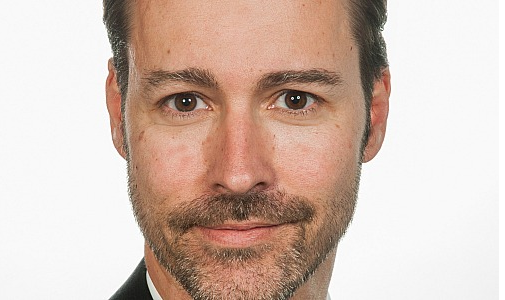The Miami Selectors Event is Brought to a Close with Debates on Equities, Flexible Strategies, and High Yield
| For Alicia Miguel | 0 Comentarios

The second edition of the Funds Selector Summit held in Miami, organized by Funds Society and Open Door Media, offered in its second and final day, investment ideas focused on equities with different perspectives (European Equities with long-only and long-short strategies, US Small Caps, European and Emerging Equities with a value investment approach), global High Yield and flexible strategies (in equities, fixed income and emerging market debt) of fund management companies Allianz Global Investors, Legg Mason Global AM, Schroders, Brandes, Edmond de Rothschild AM, and Aberdeen AM.
European equities are still the trend, both with long-only and long-short strategies. In the first area, Matthias Born, Senior Portfolio Manager of European Equities at Allianz Global Investors, presented a high conviction strategy focused on new ideas of structural long-term growth (with features such as structural growth, cost leadership, technology leadership, or a superior business model). The strategy (currently with 70 billion Euros in assets) is managed very actively and stock picking is a key factor because, in the long term, the growth style does not necessarily have to beat the market.
Allianz Europe Equity Growth Select is designed specifically to take advantage of the main strength of its investment team: the selection of securities with a bottom-up approach. The fund has the potential to evolve well in both bull and bear markets, where it shows resistance “due to stock picking and to the companies in the portfolio,” explains the fund manager. He normally invests in about 30-35 names, with a maximum position of 6% and a focus on the universe of European large and midcaps. As investment examples, Born spoke of companies such as Infineon, Inditex, Reckitt Benckiser, or Coloplast. The names he most overweighs in his portfolio are Infineon, Reckitt Benckiser, SAP, Hexagon, Prudential, Novo Nordisk, Ingenio, DSV, Legrand, and Richemont; by sectors, he favors information or industrial technology, while he has no exposure to utilities or telecommunications. By country, he is overweight in Germany, Denmark, and Sweden. The fund’s turnover is usually below 20%.
He explained that growth is the main catalyst for the performance of the portfolio, as it is what determines the long-term evolution of the shares. “In Europe, which will continue to experience an environment of low growth and inflation for years, it’s even more important to have such a long term strategy,” he said. The individual weight of each company is based on the level of conviction which reflects growth criteria, quality and valuation: “We seek high profits and price setting power,” says the fund manager. He looks to not being influenced by the benchmark and being agnostic as to countries and sectors; and also giving importance to SRI criteria. Normally, the companies in his portfolio do not pay high dividends because they use their capital for new investments.
One can also capitalize on the European stock market with long-short strategies. Mike Gibb, Product Specialist at Legg Mason Global Asset Management, spoke about a way to invest with a long-short strategy in the European market. He also showed how the Legg Mason Martin Currie European Absolute Alpha fund investment process, managed by Michael Browne and Steve Frost, is flexible enough to weather this market environment, while offering an attractive risk-return profile. It is a high-conviction directional strategy (not market neutral), which aims to capture two-thirds of the market upturns and only part of the downturns. The net exposure may vary between -30% and 100% and typically invests in between 40 and 70 companies (about 35 in the long portfolio− focusing on companies with great products and balance sheets, margin growth and innovation− and about 35 in the short− companies with declining margins and market share, poor balance sheets, poor management, low entry barriers…) all selected from a universe of 600 companies), and focusing on the mid-cap universe with a purely bottom-up approach.
The process includes quantitative and qualitative analysis, visits to companies (about 300 each year) and a thorough evaluation. “Fund managers try to identify changes at the company level and how these can affect their business and their stock price,” explains the expert. They also apply a macro-level filter with a system of traffic lights. Currently, he has a neutral vision of the asset, being neither too optimistic nor pessimistic.
“Volatility reigns in the markets and we try to capture returns while controlling risk and potential downfalls. The challenge is to capture the growth of companies in the region: Europe is a place with big companies but also with companies with problems and pressures on margins… and so the long-short concept works very well and helps to avoid problems and protect capital.” In his opinion, this strategy fits well into the portfolios.
Value style…
Meanwhile, Gerardo Zamorano, Emerging Markets’ Fund Manager at Brandes Investment Partners, also offered his perspectives on Equities, which his company manages from a value perspective and with strategies for the global stock market as well as emerging, European, or American markets. The investment process consists of three phases: analysis (by investment teams), valuations (investment committees make the final decisions), and portfolio construction (also the responsibility of the investment committees). With the conviction that in the long-term value outweighs markets and that with the current environment− after years of the style’s worst performance due to the financial crisis− there is great opportunity in this investment style.
In emerging markets, valuations are close to the levels seen on previous crises but, since then, there have been strong improvements in fundamentals. “The situation is much healthier than in the late 90s,” says the expert. Value had performed better than growth but since 2014, it has performed worse. Therefore, securities with this bias are cheaper than in the past. The Brandes Emerging Markets Value Fund invests in companies of all capitalizations, leverages overreaction to macro factors and negative feelings (e.g. political events) leverages the lack of understanding or coverage of individual firms ( “we explore all corners of the market “) and build concentrated portfolios that manage risk with conviction. They also include into their investment universe, companies from border markets and companies from developed markets with characteristics which are more similar to those from emerging markets. In total, they usually have between 60 and 80 names. Currently, some key overweights are in the consumer discretionary sector, Brazil, Russia and Hong Kong, and underweights in Taiwan, South Africa, China, or the information technology sector. They also like Panama.
In Europe, Zamorano also points out the attractiveness of valuations and opportunity in the Brandes European Value fund. Overweight in the oil and gas sector, food, and countries like Italy and Russia, while underweight in banks, health, and countries such as Switzerland and Germany. The fund includes investment in emerging European markets, currently at around 10%. Companies such as GlaxoSmithKline, Engie, Sanofi, BP and ENI are among its top 10 positions.
US Equities
There are also opportunities in US equities. Jason Kotik, Senior Investment Manager of US equities at Aberdeen Asset Management, spoke about investment in small caps companies. “Overall, the US economy grows at a slow pace, but good quality companies can be found. Two thirds of the economy is consumption and is in good shape.” Overall, companies are in good financial health and valuations are not too aggressive, says the expert. “We are not investing on the economy, but on the companies,” he reminds us.
Regarding equity flows, investors are wary after the rally experienced, but in that rally the small caps lagged behind the large caps. So valuations in the small caps are now more attractive. “Historically, small caps do better than large ones, and also usually perform well even in scenarios of interest rate hikes,” the fund manager pointed out. The reason: when rates climb it’s due to an improvement in the economy (higher growth and inflation) and the small caps usually have greater exposure to the US domestic economy. In addition, they can be protagonists in processes of M&A, usually with significant premiums, and have less coverage by analysts, giving advantage to active managers.
In the company, they believe that corporate fundamentals support this investment, they speak of a modest but positive macro scenario and believe valuations are fair. In a more volatile scenario, the dispersion has also increased and makes stock selection more important. For the expert, the markets will remain volatile given the upcoming elections in the US, the uncertainty about monetary policy and macro doubts, which can lead to some correction but can also benefit asset management companies like Aberdeen. “We like boring names in which the others aren’t interested,” says the expert, who expects returns around the mid-single-digit. With its strategy (Aberdeen Global-North American Smaller Companies Fund, which also invests a small part in Canada) is able to offer a better return than the market, he explains, both in bull and bear markets. Currently overweight in sectors such as materials, consumer staples, industrial, and communications services, he has a strong underweight position in finance and utilities.
In Fixed Income…
In fixed income, Wes Sparks, Head of Credit Strategies and Fixed Income at Schroders in the United States, explained the opportunity which credit, investment grade and high yield, represent globally. “We are optimistic in IG and HY but we must be aware that there has been a big rally in a very short period of time: the global high yield has risen more than 12% since February,” he reminds us. For this reason, and as far as fundamental and technical factors are concerned, the management company remains optimistic on the asset, but is somewhat concerned about its valuations. “The fundamental and technical factors of high yield are more positive than in investment grade debt, but valuations are less attractive than in February. It is even a faster recovery than the sell-off and usually it does not work that way,” says Sparks; hence his caution in the asset. “It’s not expensive, but there is no safety margin,” he adds.
But he insists that the fundamentals are positive: “The risk of default is not a widespread threat.” In the United States, he speaks of many fallen angels during the first quarter, which he sees as very attractive opportunities. In terms of flows, the management company uses extreme flows in funds as a contrarian indicator: if there is output, it coincides with strong sales and falling prices, which is followed by recovery. And there is support from long term investors: “In an environment of low interest rates, investors continue to seek profitability and high yield is one of the assets in fixed income with the highest potential. We are seeing demand for long-term investors, such as pension funds,” he adds.
The fund manager denies that there may be a strong sell-off in high yield from now on, but believes that investment grade debt, by presenting better valuations, can be a better place to be in the medium term, because it has not experienced such a strong rally in recent months. “Valuations are more positive, and the asset has a more diversified buyer base which supports the market,” he says, although he clarifies that he is confident that high yield will beat IG over a twelve month period. “We have confidence in both assets, the returns will be positive in twelve months,” he adds.
In his global HY fund (Schroder ISF Global High Yield), he is committed to companies with cash, good margins and profits, pricing power, and manageable leverage, and regarding the US, he speaks about domestic-market-oriented defensive sectors (not impacted by the dollar and commodities at low levels) such as health or gambling, or companies that benefit from low gas prices (restaurants, automotive industry….). The fund is underweight in sectors related to raw materials (energy, basic industries…) and sees more value in other sectors such as communications.
Regarding central banks, Sparks believes the Fed will not be very aggressive in its rate hike because it will take into account international problems, while central banks in Japan and Europe will remain accommodative. Treasury bonds will rise in the coming months, but not too much, he says. Regarding the risks, he acknowledges that the interest rate is higher in IG than in HY, denies a cycle of widespread defaults (it will be reduced to the metals, mining, and energy sectors, he believes) and believes the next cycle of defaults will be in two years, in 2018. Regarding illiquidity he says that markets must compensate for it.
Flexible Strategies…
Kevin Thozet, Product Specialist in the Asset Allocation team and Sovereign Debt at Edmond de Rothschild Asset Management, shared the company’s positioning of flexible and dynamic funds in Global Fixed Income, Emerging Fixed Income, and European Equities. “Flexibility is part of our DNA and we define it as active management and investment without restrictions. We seek opportunities wherever they are, and we are flexible to invest in different market segments and vehicles.” The company believes that with the return of volatility, liquidity shortages, and greater market movements, this philosophy is more necessary than ever to create value. Because, regardless of vision on markets, the key is to be able to adapt quickly to whatever happens, the company comments.
His global fixed income fund tries to beat the market and obtain absolute returns, and it can invest across the fixed income universe. As some examples of that activity and how they try to capture the opportunities, he explains that when tapering started in 2013, they invested on assets that suffered, such as emerging debt, because they had conviction; during the Chinese crisis last year, they built positions in convertibles to benefit from the rebound in November 2015; this year, with strong volatility and widening spreads on the government debt of Greece and Portugal, they saw it as an opportunity and increased exposure to Portugal. With regard to profitability, credit and public debt have been the largest contributors on an annual basis, but so have emerging debt and convertible bonds.
As for the company’s emerging market strategy− in UCITS format and domiciled in Luxembourg−, in the management company they have a contrarian and opportunistic approach without restrictions, are agnostic regarding benchmark, and are also able to invest in the entire universe (public and private debt). The largest position in the portfolio today is Ukraine (they see opportunities particularly in the corporate segment). Another conviction of the portfolio is Venezuela (with positions in both public and private debt): it’s not a commitment to its economy, but it does offer a very asymmetric profile between risk and return, says the fund manager. Also, an opportunistic coverage, although they are positive on emerging market debt, is investment in CDS in China. In 2013, emerging markets suffered heavy falls but the fund achieved positive returns.
The fund manager also spoke about the company’s flexible strategy in European stock market, which has some core, 60%, concentrated in equities with conviction, and above it, a hedge with derivatives to generate returns and reduce volatility and protect markets in case of falls.












